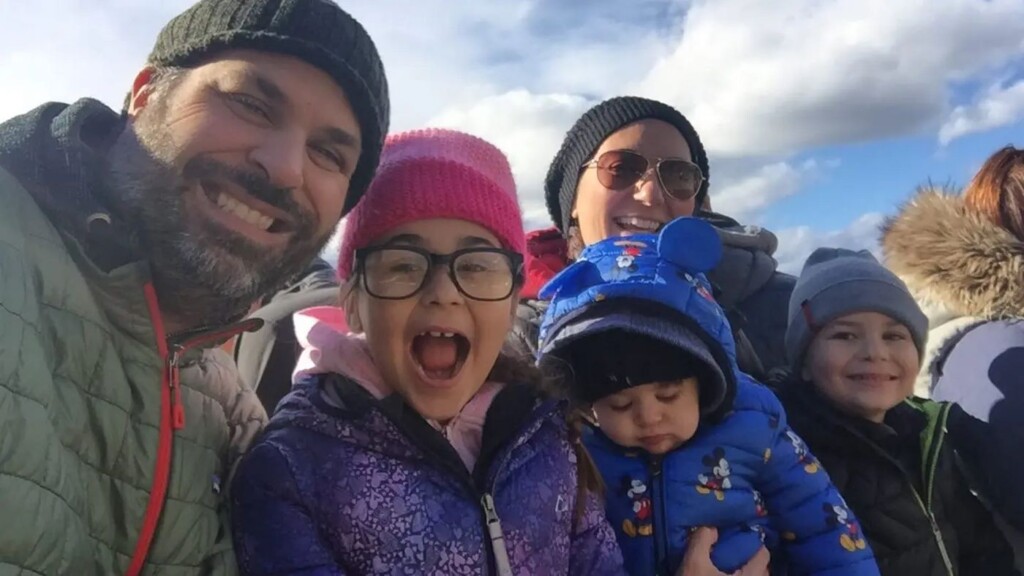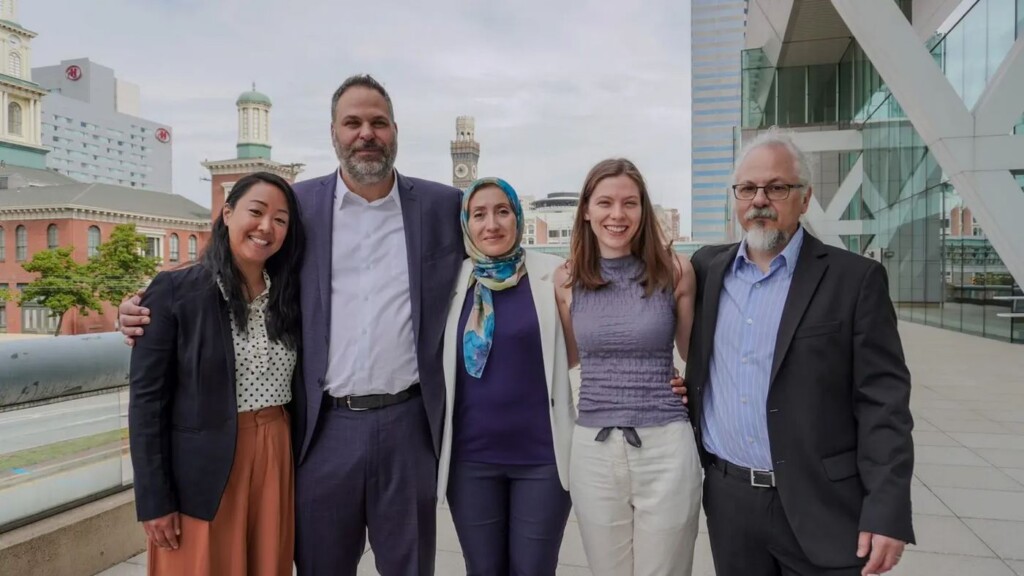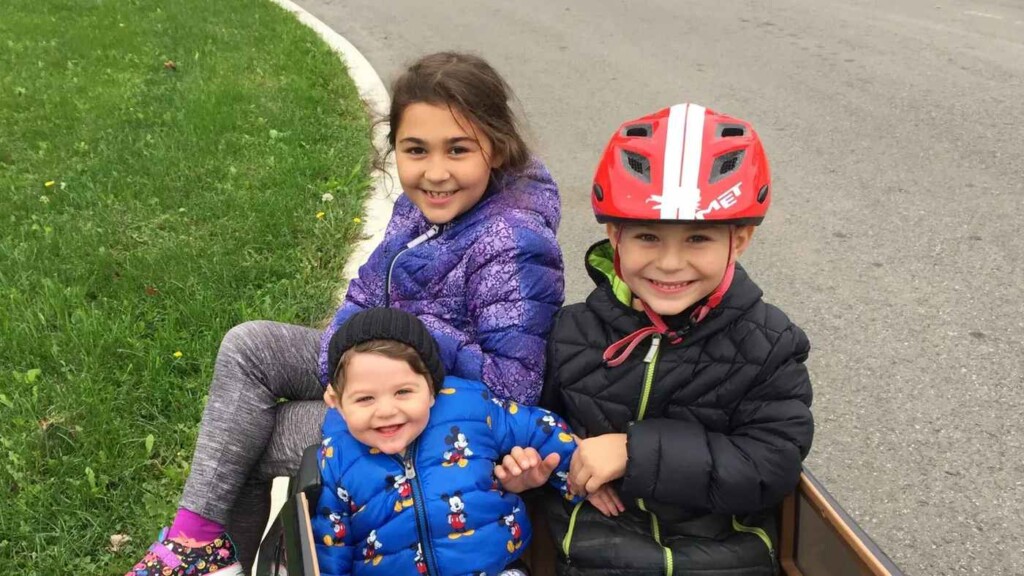 Terry and his family, with son Michael pictured in the blue down coat – credit, Terry Pirovolakis, supplied to the media.
Terry and his family, with son Michael pictured in the blue down coat – credit, Terry Pirovolakis, supplied to the media.From Fox News Digital comes the incredible story of a Canadian family that stopped at nothing to find a cure for their newborn son’s rare disease.
Putting their life savings on a wing and a prayer, the determination to see their boy grow up turned to compassion after they decided that the medicine they helped create should save more lives than just their son.
Terry and Georgia Pirovolakis live in Toronto, and it was back in 2017 that they welcomed their third son, Michael, into the world. He was declared a healthy baby boy, and the couple went home to introduce him to his older brother and sister.
But as the parents began counting the missed developmental milestones, they were worried something was seriously wrong—and they were right.
After what Terry described as an “18-month diagnostic odyssey,” Michael Pirovolakis was diagnosed by a neurologist with spastic paraplegia 50 (SPG50). This neurological disorder affects fewer than 100 known people in the world.
The doctors told the parents to take Michael home and love him with all their strength because he’d probably be in a wheelchair at 10, a quadriplegic at 20, and dead shortly after that.
“Children with SPG50 may experience early developmental delays, muscle weakness, and spasticity, but they continue to strive and adapt,” Dr. Eve Elizabeth Penney, an epidemiologist at the Texas Department of State Health Services, told Fox News Digital. “Managing SPG50 requires a comprehensive, multidisciplinary approach to address its various symptoms and challenges.”
There is neither cure nor effective treatment available through the FDA for SPG50, but Terry was just not interested in hearing any of it. A month after Michael’s diagnosis, the dedicated father flew to Washington D.C. for a conference on gene therapy. He also visited the National Institutes of Health at the University of Cambridge in the UK where he heard scientists had been studying the disease.
“We then liquidated our life savings, refinanced our home, and paid a team at the University of Texas Southwestern Medical Center to create a proof of concept to start Michael’s gene therapy,” Pirovolakis said.
Encouragingly, whatever Terry picked up along his journey worked, and the disease’s progression was halted in mice and human cells in vitro. With that data in hand, the father’s journey, which had already gone from Canada to the US, to the UK, and back to the US, extended onward to Spain, where a small pharmaceutical company made 4 doses of the gene therapy drug.
 Terry Pirovolakis, second from left, is pictured with members of his team at his nonprofit, Elpida Therapeutics – credit, Terry Pirovolakis, supplied to the media.
Terry Pirovolakis, second from left, is pictured with members of his team at his nonprofit, Elpida Therapeutics – credit, Terry Pirovolakis, supplied to the media.From seeker to savior
Back in Canada, the Pirovolakis received approval from Health Canada to move ahead with Michael’s gene therapy, which would involve a lumbar puncture and injection of cerebral spinal fluid.
In March 2022, Michael, then 5 years old, became the first human with SPG50 ever to undergo gene therapy.
Just try and imagine the mood in the Pirovolakis household as the days went by and Michael’s capabilities for movement, coordination, and speech began improving. His doctors were uniform in their opinion: the treatment was a success.
FIGHTING BACK AGAINST RARE DISEASES: Children with Rare Birth Defect Are Breathing Easier with Device Made at Georgia Tech
Three doses remained, which might have been reserved for when and if the disease returned, but the family decided that, because they had learned about the cases of other children, the other doses should go to them.
“When I heard that no one was going to do anything about it, I had to—I couldn’t let them die,” Terry told Fox News Digital, referring to the fact that no pharma company were currently developing drugs or treatments for SPG50, and without the doses Terry had spent his life savings to acquire, they were without hope of a future.
That year he helped set up a phase 2 trial that treated three children, one with each dose, all of whom are improving. One of those was 6-month-old Jack Lockard, whose mother told Fox that he is currently “thriving.”
Terry has done well in life—he’s an IT manager at a successful company, and so was able to stomach the stomach-churning cost of developng the drug himself—to the tune of $1 million per dose.
FOR THE SAKE OF THE CHILDREN: After Taking Vitamin B2 Baby Becomes Solitary Case of Recovery from Rare Genetic Disease
He has approached several pharmaceutical companies with the trial results to see if any are interested in taking up the project, but none, so far, have done so. The costs are so high, and with only 100 people worldwide known to have SPG50, the market share is beyond minuscule.
Terry realized the need was dire—not just for financing cures for SPG50, but other rare diseases that pharma companies don’t touch. He quit his job in IT to found Elpida (Hope in Greek) Therapeutics. His team consists of 5 employees and 20 consultants with a phase 3 trial for SPG50 now set to take place at the NIH in November.
They managed to get 8 doses of the drug made in Spain and flown to the US, but by then they ran out of money.
 Pirovolakis’ two older children, pictured with their little brother, Michael, bottom left – credit, Terry Pirovolakis, supplied to the media.
Pirovolakis’ two older children, pictured with their little brother, Michael, bottom left – credit, Terry Pirovolakis, supplied to the media.“The treatment is here, just literally sitting in a refrigerator, ready to go,” Rebekah Lockard, Jack’s mother, whose daughter Naomi also has SPG50 and is a candidate in the prospective trial, wrote recently. “Doctors are ready. There just isn’t enough money to make it happen.”
The Lockards have a GoFundMe established to raise money for their stake in the trial, hoping to get Naomi one of the 8 doses having seen how effective it was for Jack. It has raised $137,000 at publishing time, just 13% of the total.
DEVELOPING CURES FOR KIDS: 13-year-old Successfully Undergoes World-First Treatment to Cure Rarer-Than-Rare Wild Syndrome
Terry says he hopes that a philanthropist will come along and fund the trial considering how successful the treatment has been so far.
Terry Pirovolakis has already moved mountains to get as far as he has. For the sake of children like Naomi, one can only hope he has strength to move still more.
SHARE This Incredible Story Of Hope, Pain, Perseverance, And Miracle…
Source link

